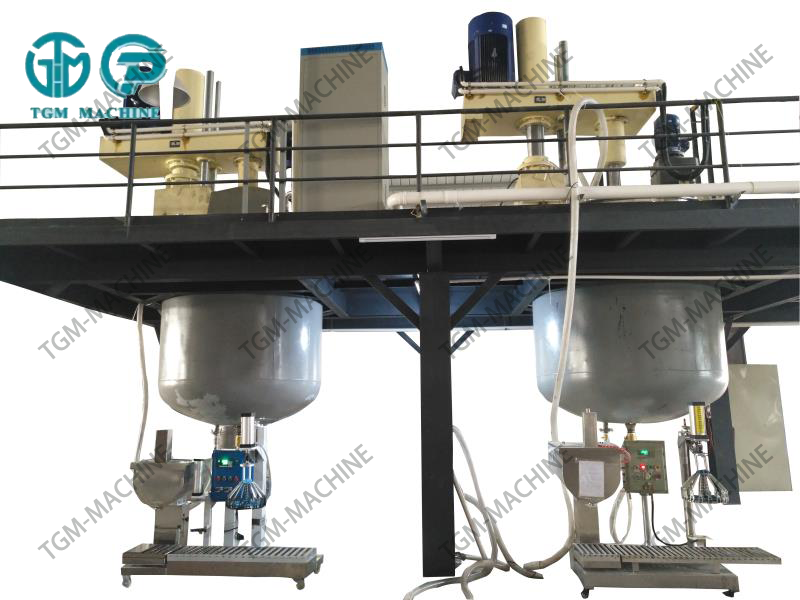Email cannot be empty
Password cannot be empty
Email format error
Email cannot be empty
Email already exists
6-20 characters(letters plus numbers only)
The password is inconsistent
Email format error
Email cannot be empty
Email does not exist
6-20 characters(letters plus numbers only)
The password is inconsistent


Behind the Seal: How Silicone Sealant is Made
Silicone sealant. It's that versatile, flexible, and reliable material in the white or translucent cartridge that seals our windows, waterproofs our bathrooms, and holds our aquariums together. But have you ever wondered what goes into making this modern marvel?
At its core, silicone sealant is a precisely engineered product, and its production is a fascinating blend of chemistry and advanced manufacturing. Let's pull back the curtain and walk through the key stages of how silicone sealant is produced.
The Core Ingredients
First, let's meet the key players in the formula:
-
Silicone Polymer (Polydimethylsiloxane): This is the backbone of the sealant, a viscous polymer that gives the product its fundamental elastic properties.
-
Fillers: Materials like calcium carbonate or silica are added to improve strength, durability, and to adjust the viscosity (thickness) of the final product.
-
Crosslinker: This is a crucial component that enables the sealant to cure. When exposed to atmospheric moisture, it forms chemical bonds with the polymer, turning the material from a paste into a flexible rubber.
-
Adhesion Promoters: These special chemicals ensure the sealant sticks securely to a variety of surfaces like glass, metal, and tile.
-
Catalysts: Tin-based catalysts are often used to speed up the curing reaction between the polymer and the crosslinker.
-
Plasticizers: These are added to modify the flexibility and hardness of the cured rubber.
-
Pigments: To give us the standard white, black, translucent, or even colored sealants.
The Manufacturing Process: A Step-by-Step Journey
The production of silicone sealant is a continuous, automated process that ensures consistency and high quality. It can be broken down into four main stages:
Stage 1: Weighing and Pre-Mixing
Precision is everything. All the raw materials—polymer, fillers, plasticizers, and pigments—are precisely weighed according to a secret recipe. They are then loaded into a large, powerful mixer, often a planetary mixer or a high-shear disperser. This initial mixing creates a uniform, thick paste, ensuring all the dry components are fully wetted by the polymer.
Stage 2: De-aeration (Vacuum Mixing)
The vigorous mixing in the first stage traps a significant amount of air bubbles in the paste. These bubbles are the enemy of a smooth, professional-grade sealant. To remove them, the mixture is transferred to a vacuum mixer. Under a powerful vacuum, the air bubbles expand and are efficiently drawn out of the paste, resulting in a perfectly smooth and bubble-free compound.
Stage 3: The Final Mix (Adding the "Secret Sauce")
This is the most critical and sensitive part of the process. The de-aerated base compound is cooled and transferred to a final mixer. Here, the highly reactive components—the crosslinker and catalyst—are carefully added.
This step must be performed in a moisture-free environment (often under a dry nitrogen blanket). Why? Because if moisture from the air gets in, the sealant will start to cure inside the mixing tank—a manufacturer's worst nightmare! This stage is quick but meticulously controlled.
Stage 4: Packaging
The finished, uncured sealant is now ready for its new home. It is pumped directly into foil-lined plastic cartridges or sausage packs. The foil lining is essential as it prevents moisture from initiating the cure while the product is on the shelf. The cartridge is then immediately capped, and the nozzle is sealed with a sturdy foil or plastic cap to ensure a long shelf life.
Quality Control: The Unseen Step
Throughout this entire process, rigorous quality control checks are performed. Samples are tested for:
-
Viscosity: Is it the right consistency for easy application?
-
Cure Time: Does it skin over and cure within the specified time?
-
Shore A Hardness: Does it achieve the correct flexibility and hardness after curing?
-
Adhesion & Tensile Strength: Will it perform reliably under stress?
From Factory to Your Home
Once packaged and quality-checked, the cartridges are boxed and shipped out. It's only when you snip the tip of the nozzle and expose the bead of sealant to the air that the magic final step happens. Moisture in the air triggers the crosslinking reaction, transforming that paste from the cartridge into the durable, waterproof, and flexible rubber seal we rely on.
So, the next time you use a tube of silicone sealant, you'll appreciate the sophisticated science and precision engineering that went into creating that simple-looking cartridge. It's a true testament to how modern chemistry builds a more sealed, secure, and watertight world.

